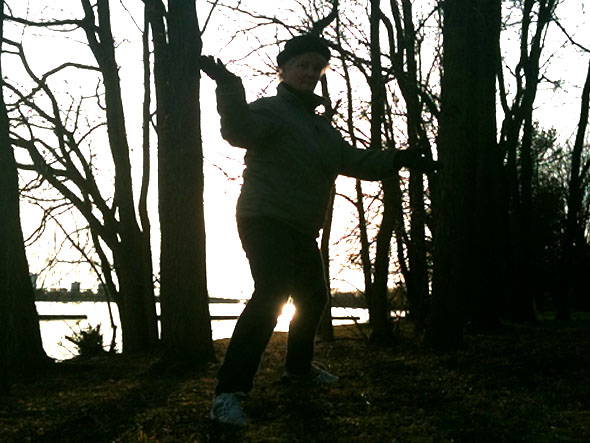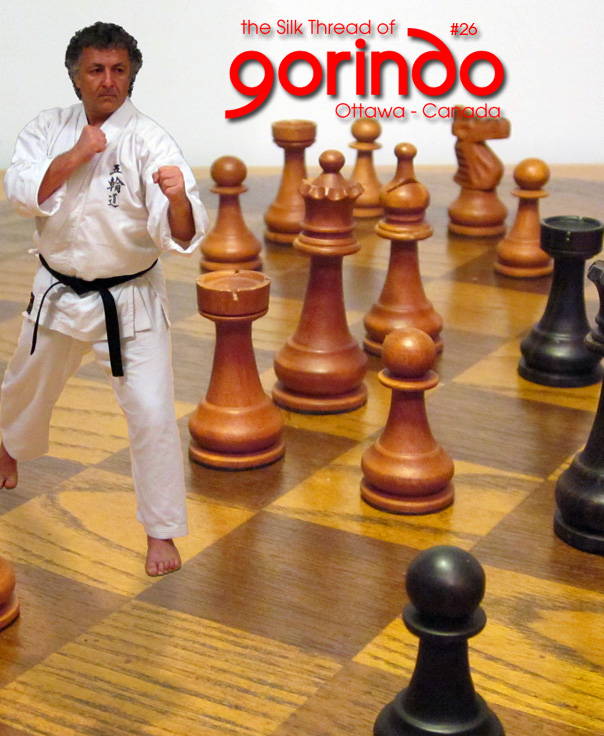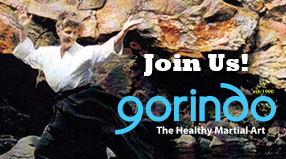The Silk Thread of Gorindo - Ottawa - Canada
Issue 26
- Keeping in Line with Your Spine (Part 4)
- The Process of Teaching (Part 1)
Cover Claudio Iedwab 'Chess Mind' - Photo by ©2012 Roxanne Standefer
Keeping in Line with Your Spine (Part 4)
< read Part 3 (previous issue)

The effect of gravity also requires that we work on elongation of the entire spine with careful attention to maintaining the spacing between vertebrae. This relentless force can leave its stamp on the human body, and opposing muscles must be in good shape to avoid early aging or postural anomalies. When compressed over time, or suddenly in an accident, the disc material between vertebrae (a kind of cartilaginous jelly encased in a fibrous coating or shell) can bulge and push on nerves or vessels in the area. In more extreme cases, this casing can rupture and the interior jelly oozes out. This material is very irritating to surrounding tissue. These impingements can cause pain or numbness in other areas of the body, particularly down the legs, as well as nervous tension and sapping of energy. This is the condition referred to by the expression “slipped disc.” In fact, the disc is not slipped at all, but as a mental image it is useful in visualizing the type of shearing action that can cause an injury. It occurs because one section of the spine is stiff and not moving fluidly between vertebrae as when the links in a bicycle chain seize and the pedal slips. The spine will often “give way” between these sections, and these trigger points can produce recurring problems.
The healthy spine is not, in fact, straight. Although it should be free of curves when viewed from the rear; if you were able to observe with x-ray vision from the side, you would see the lower lumbar and cervical spine curving inwards, and the thoracic outwards, from our imaginary straight line. What you have to feel when the “back is straight” then, is a spine free of tension or pain, with shoulders and pelvis slung freely within the framework. Every time you move, even to take a simple step, this architecture will change.
The martial artist learns to find a center in all this structure, one in which energy flows freely and strength is at a maximum. Walking is, after all, merely a controlled fall, in which the forward-tilting body is repeatedly caught and supported by the right and left legs alternating in turn. Complex movement works from basic principles and constant unconscious adjustment of an internal gyroscope. The martial artist consciously trains this mechanism so that it can run on autopilot while he seeks to unbalance the system of his opponent. To do so, the martial artist wants upon a strong framework that will hold its form even when completely relaxed. He needs smooth mechanical workings where the muscles are not tensed, because he relies upon this relaxed state for sensitive reflexes and lightning fast speed. He also knows that to sustain vigorous activity over prolonged periods requires being able to rest muscle fiber between power states, even in quickly repeated actions.
Excerpt from “The Secret Art of Health & Fitness – Uncovered from the Martial Arts Masters” by Claudio Iedwab & Roxanne Standefer
© 2012 Photo by Claudio Iedwab
Issue 26
- Keeping in Line with Your Spine (Part 4)
- The Process of Teaching (Part 1)
« Click the Subscribe link on the left





